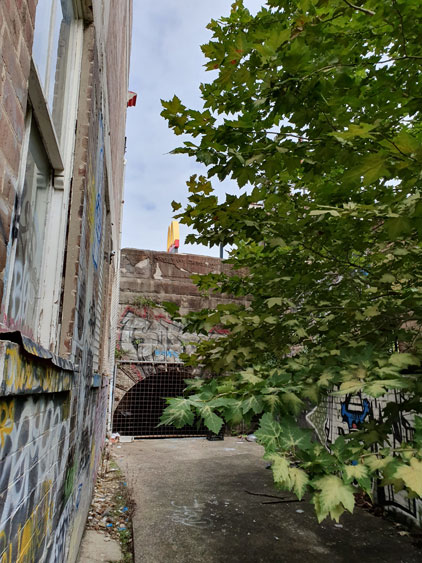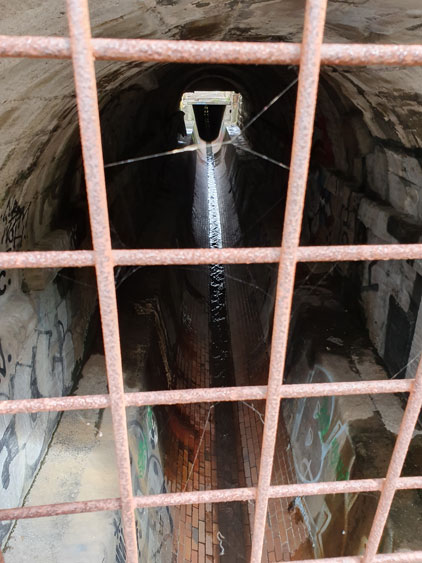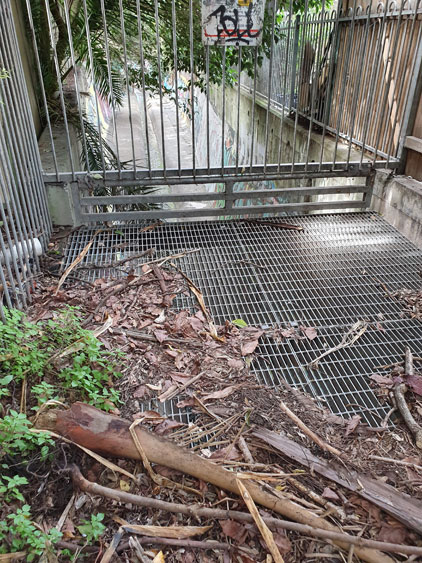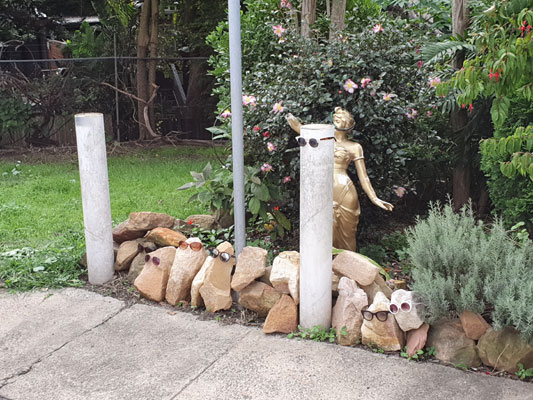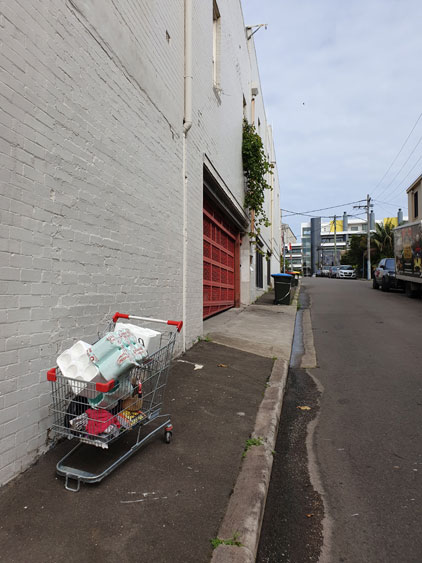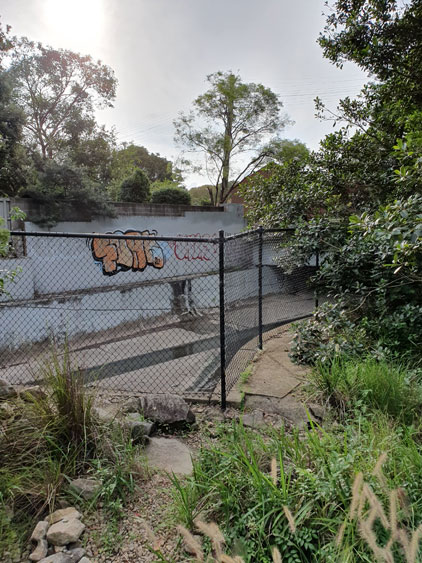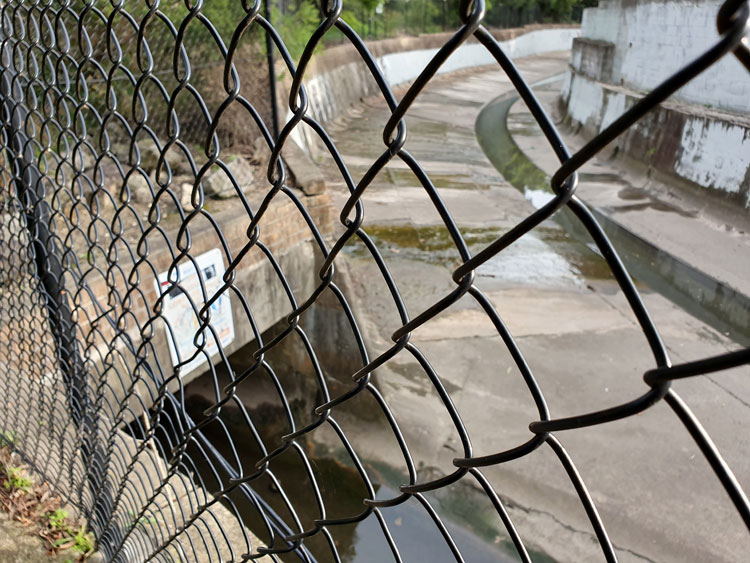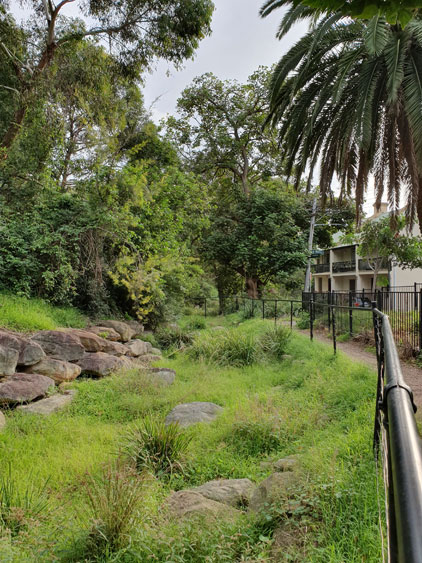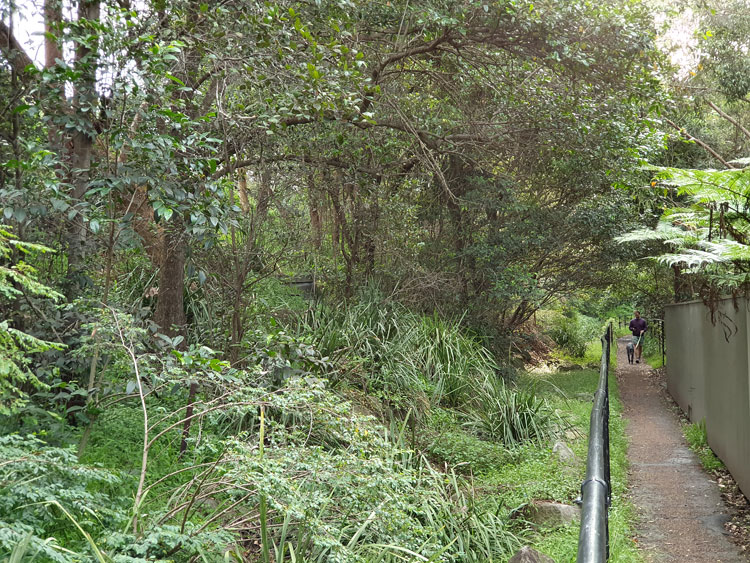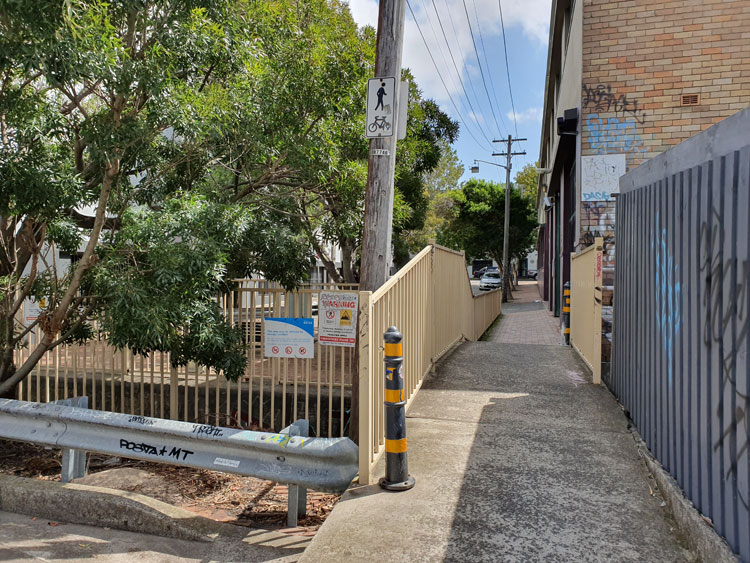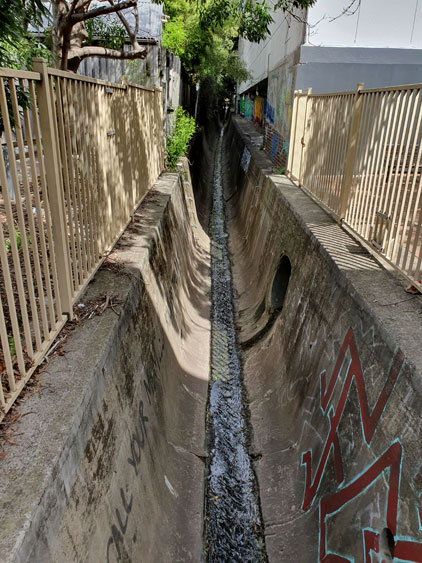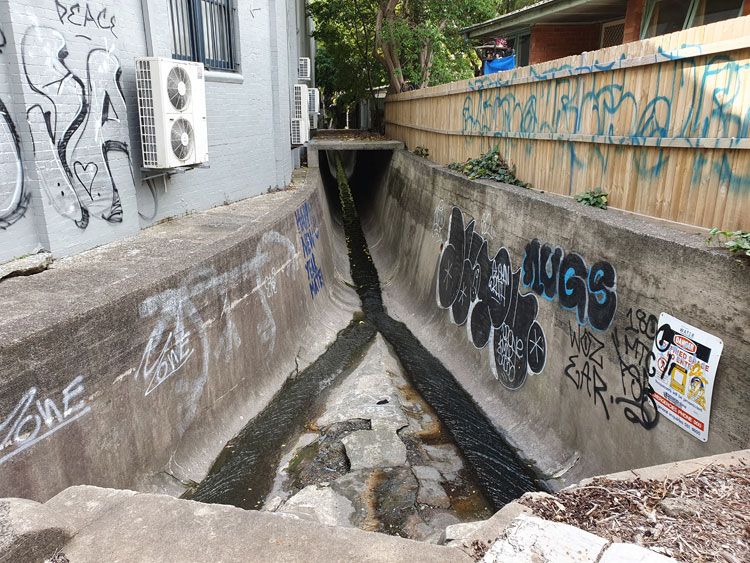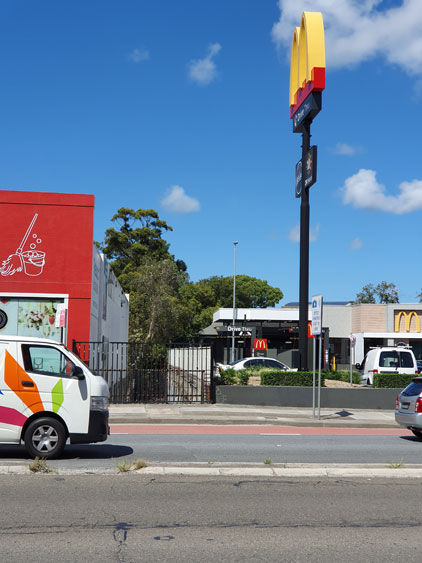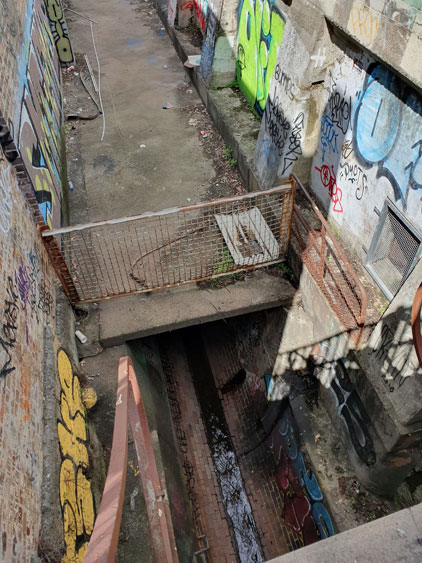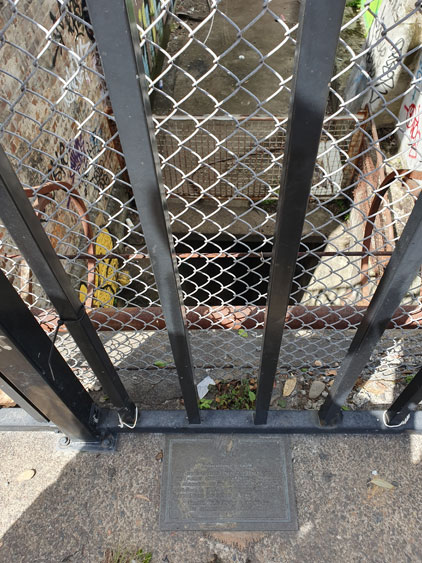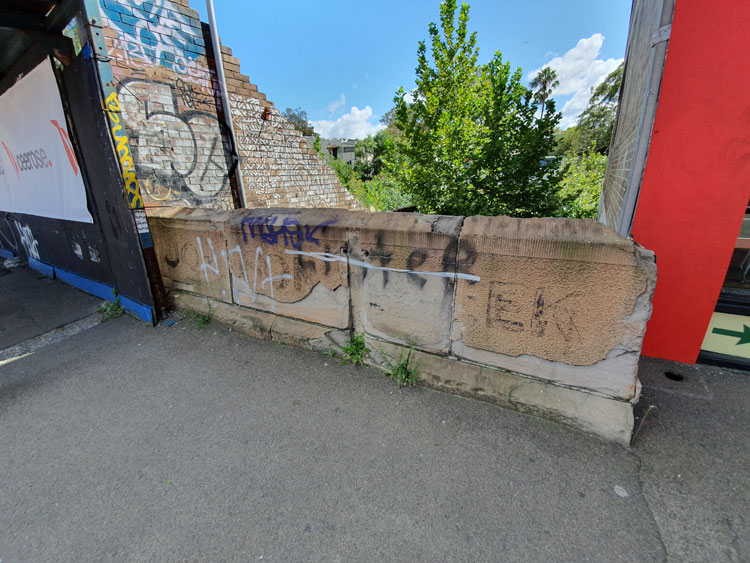Saturday 4 April 2020

Impatient to see how the story ends, today I have leapt ahead to Glebe Foreshore Parkland. After its containment in concrete drains and stone canals, this is where Johnstons Creek is freed into Rozelle Bay, an arm of Sydney Harbour. Along this last stretch it almost looks like a real creek as it emerges from under the rail viaduct. But Sydney Water is in the process of further ‘naturalising’ it, with plans to create a natural planted stormwater system and increase the salt marsh around the creek.
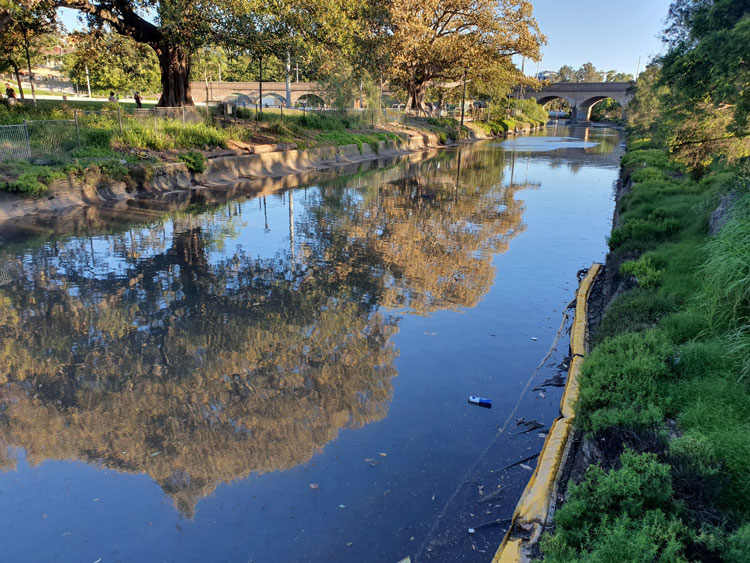
It was not a good idea to come on a sunny Saturday. Social distancing is hard to maintain. Just last week police closed Bondi Beach because of the hordes gathered there to soak up the rays. No police in sight at Glebe Foreshore Parkland but, while not as crowded as Bondi, it has drawn many fresh air seekers. They ride their bikes, lounge at picnics, walk, jog, push past on narrow bridges, and watch their dogs attack other people’s dogs.

We decide against trying to cross a busy footbridge but peek through the safety fencing at the incipient salt marsh before scarpering back to the car.

